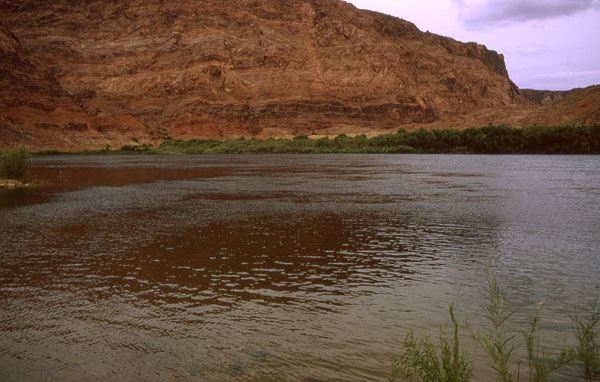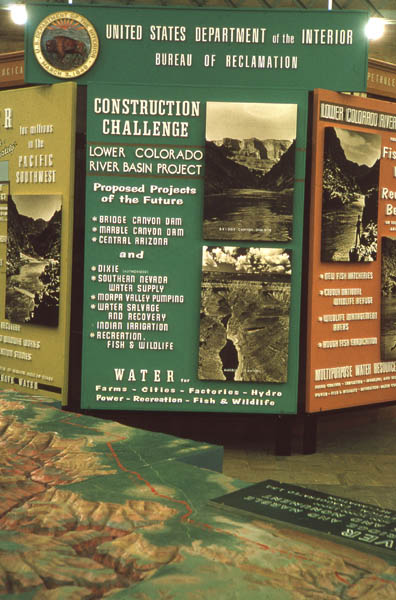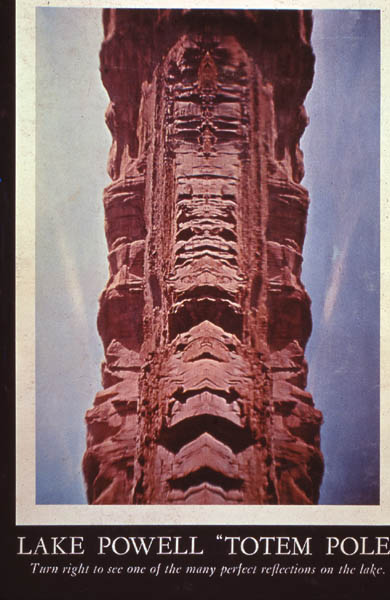mile 0.0


| Mile 0.0 Lee's Ferry
The Colorado River here emerges from the plateau through the Vermillion
Cliffs. Downstream it immediately begins to drop into Marble Gorge,
the upper part of the Grand Canyon.
Lee's Ferry played an important part in the building of the Glen Canyon Dam. The dam was built to regulate the flow of water past this point, which is the boundary between the Upper Colorado River Basin and the Lower Colorado River Basin. The reasons for picking this point were political and not hydrological, semantic and--in some critically important ways--not logical. Furthermore, two of the U.S. Senators that instigated the acts leading to the building of the dam were Arizona's contingent, Carl Hayden and Barry Goldwater. It was a project that brought jobs and capital in the state. The state was suffering fiscally. However, Barry Goldwater was one of the few who knew Glen Canyon, He was one of the few who had written a book about Glen Canyon. He was later to say, "...It was just a nice place... I'd have to be honest with you. I'd been happier if we didn't have the lake. Glen Canyon was a beautiful piece of water..."
|
Immediately
below Lee's Ferry is Grand Canyon.

| The Bureau of Reclamation
wanted to build two dams in Grand Canyon: at Bridge Canyon and in Marble
Gorge. Those dams would have made float trips in Grand Canyon impossible
and further disrupt Grand Canyon ecology beyond the disruption by Glen
Canyon Dam.
This display, in the lobby of Hearst Mining Building on the U.C. Berkeley campus, was set up by the Bureau in advance of a visit and talk by Floyd Dominy, the Commissioner. Dominy's geologist for Glen Canyon Dam had his office on the balcony overlooking this display (and right next to my office). Dominy's talk was well attended; the audience included: Dick Norgaard (who had something to say about Dominy's claim that only fifty people saw Glen Canyon in the year preceding Lake Powell--Dick had taken over a thousand on Sierra Club trips, and I had taken 77 on UC Hiking Club trips); Dan Luten (who pointed out that he had counted about three thousand signatures new that year in the river register at Hole in the Rock); Anne Brower, wife of David (who was in Washington lobbying against Dominy); Will Siri, president of the Sierra Club (who's office and research lab were in the building next door); Phil Hyde, photographer (and active member of a steering committee of the Sierra Club--as was I); and numerous others who were polite but in opposition to what Dominy had to say. The audience was about two to one against Dominy. Dominy went on to say that about one million saw Glen Canyon in the year after the reservoir started to fill. He included those who saw it while driving over the bridge in front of the dam. In fact, most of Dominy's talk was in praise of his great pride, Glen Canyon Dam and Lake Powell. About half of his pictures of Lake Powell he showed us sideways: |

| After Dominy had left Berkeley, I was allowed to put up an argument against the Grand Canyon Dams next to Dominy's display in favor. The cost of the BuRec display was $10,000; the cost of mine, $3.75 -- for the color prints of Glen Canyon, before and after, that I displayed. We got many favorable comments on the balance of the displays. |